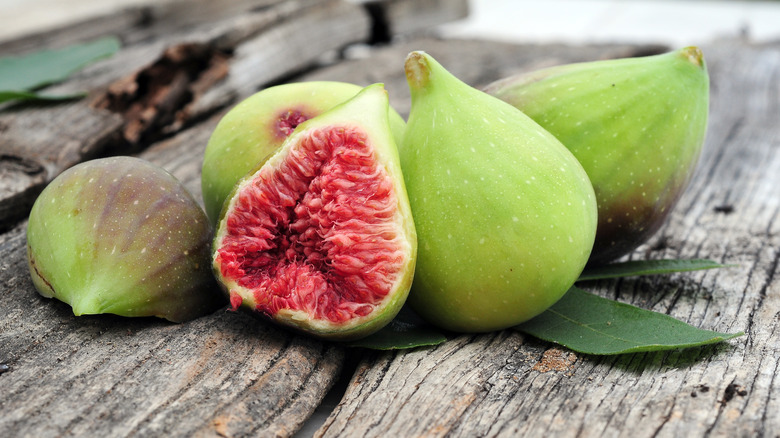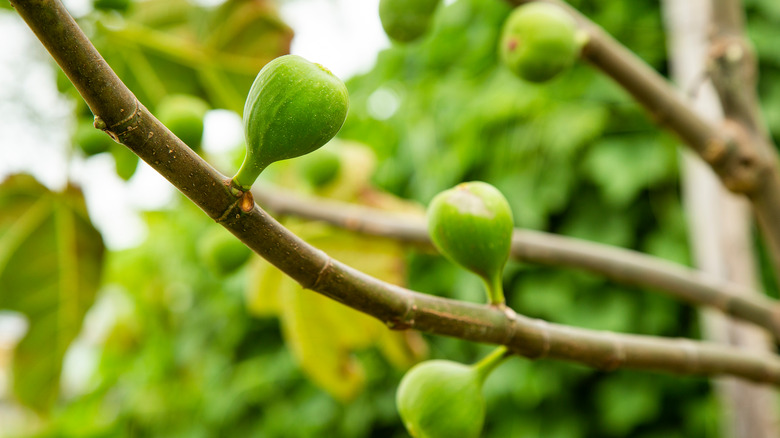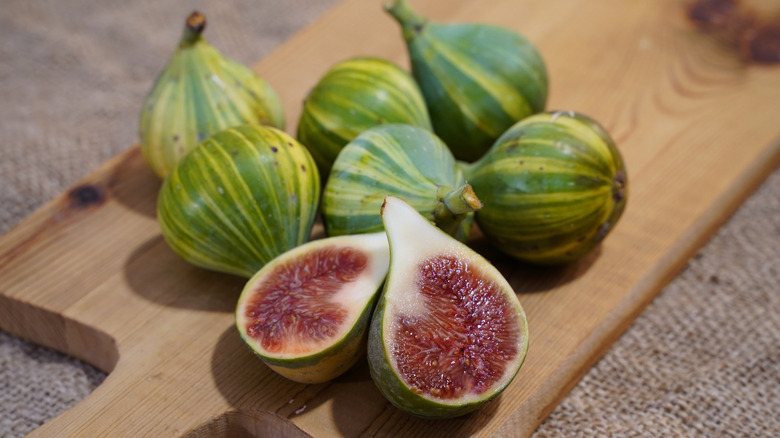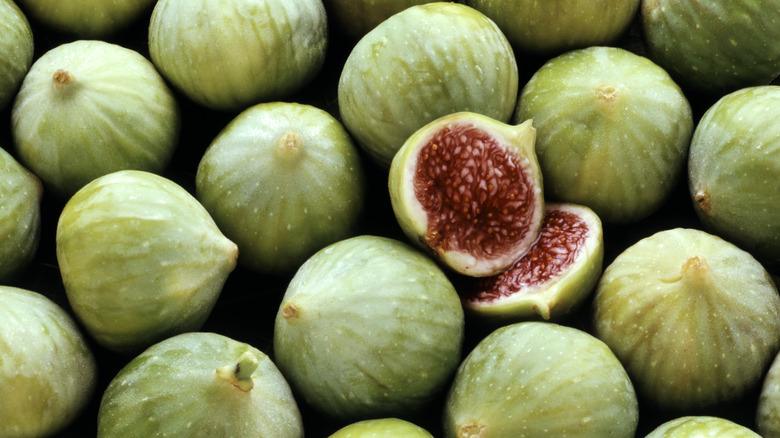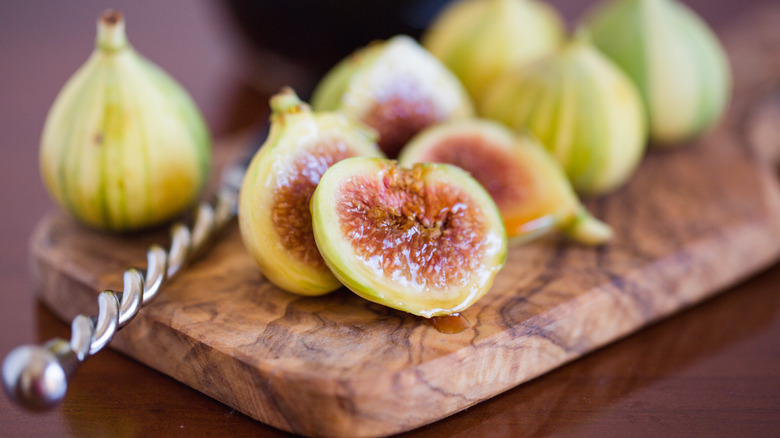What Makes Adriatic Figs Unique?
Biting into a sun-kissed fig plucked straight from the tree is one of late summer's delights. But unless you live in a fig-friendly climate and have your own fig tree, it's much more likely you are eagerly shopping at your local market during their brief growing season. There are over 750 species of figs in all different shapes, sizes, and colors, but we only consume a handful of them. Adriatic figs (Ficus carica) are one of five main edible fig varieties grown in California for commercial purposes, and are the most abundant out of any fig family. Adriatic figs are actually a classification of about 25 fig varieties that are sweeter and have green skin.
Known for their vibrant and deep reddish pink flesh and green skin, Adriatic figs are one of the most popular types of figs in the world and are exceptionally sweeter than other types of figs. Named after the sea by which they originally grew, they are now grown worldwide and considered a beloved seasonal delicacy.
What are Adriatic figs?
Adriatic figs were one of the first figs to be grown in California commercially. The first record of them is from the 18th century in central Italy. Hailing from the Mediterranean, Adriatic figs made their way to California in the late 1800s and have been loved ever since. They are well suited to grow in the climates of Northern California and the Northwest and are very sensitive to any damage from frost. Harvest is from late August through October, depending on the weather conditions.
This particular type of fig is sweeter, with a looser and seedier pulp than others. Adriatic figs are also larger than other figs and have very short necks. On average, they weigh a little under 2 ounces when matured, and each fig contains up to 1,600 seeds that provide that sweet crunch enjoyed fresh off the branch or in a Fig Newton. They're pear-shaped and their green skin is often lined with streaks of yellow, earning them the nickname candy-striped figs. Their delicate, thin skin bruises easily, so for this reason, they are typically sold locally, as they don't hold up well during transportation on a commercial basis.
What do Adriatic figs taste like and how do they compare to other figs?
Sweet and sugary, Adriatic figs are often compared to strawberries and raspberries and are described as having a jammy and honeyed flavor. They have a creamy inside and are often the fig that is used for fig paste. Fruity and floral notes are also ascribed to Adriatic figs, as are hints of currant and coconut. They are also sometimes described as having a honey flavor with a bit of tangy citrus. When they are dried,Adriatic figs become a golden color and are incredibly sweet and chewy.
Compared to the some 800 other fig varieties, they have a fresh, sweeter flavor. Black Mission figs are also sweet and known for their unique earthy flavor. Brown Turkey figs are less sweet and suited for savory preparations such as salads, while Calimyrna figs have a distinct nutty nuance. While it's recommended to peel the skin before eating certain fig varieties, Adriatic figs are great to eat as is.
How to cook with Adriatic figs
Adriatic figs are sweet enough to stand alone as a fresh dessert, but there is also no shortage of recipes to try them in. They pair well with a dollop of creme fraiche or mascarpone for a hit of creaminess on the palate. They're also the perfect fit for a charcuterie board as they complement soft cheese and nuts nicely. Simply halving and pan-searing them to achieve some caramelization will really bring out the natural sugars. Pair the halves warm with some goat cheese and a drizzle of reduced balsamic vinegar to round out the flavors and cut the sweetness.
Fresh Adriatic figs are fit for baking up pies and tarts, or for trying your hand at your very own version of a Fig Newton. Popping them in the air fryer makes a nice sweet snack. And in their dried form, they make a great topping for yogurts, cereals, and ice cream. They also make a delicious preserve or marmalade to spread on your toast, waffles, or pancakes.
Where can you find Adriatic figs?
If you live in Northern California or the Northwest, you'll probably come across Adriatic figs during their season at your local farmers market. Otherwise, they can be hard to come across in their fresh form — it's more likely you'll come across them in their dried, jammed, or paste form.
If you're lucky enough to come across some fresh Adriatic figs, look for soft, plump ones with their stem still intact and no excessive bruising. If they look dry or have any cracks, they're past their peak of ripeness. Because they are so fragile they spoil easily and swiftly. They are best stored in a single layer in your refrigerator's crisper drawer and eaten within a few days of getting them home.
If you want to stock up, you can freeze them by washing them and removing the stems and popping them in your freezer spaced out on a plate. Once frozen through, you can transfer them to a plastic bag. You can also try your hand at drying them in your oven at a very low temperature.
The nutritional value of Adriatic figs
Figs in general are a great natural sweetener and alternative to use in their dried or fresh form in baking and anywhere else you'd normally opt for white sugar. They are still a high glycemic food, meaning they'll cause a swift blood sugar spike, according to Verywell Fit, but they also offer up fiber, magnesium, potassium, and antioxidants. They have just a trace of fat and barely any protein and average about 30 calories, depending on the size. They are also a source of vitamin K, vitamin B6, and copper. Particularly the skin of figs is rich in antioxidant compounds which have been shown to minimize oxidative stress in the body.
Medical professionals advise consuming antioxidants from foods, such as figs, is preferred over supplements. And in their paste form, a randomized controlled trial found that it was effective at treating constipation and alleviating symptoms of irritable bowel syndrome.
